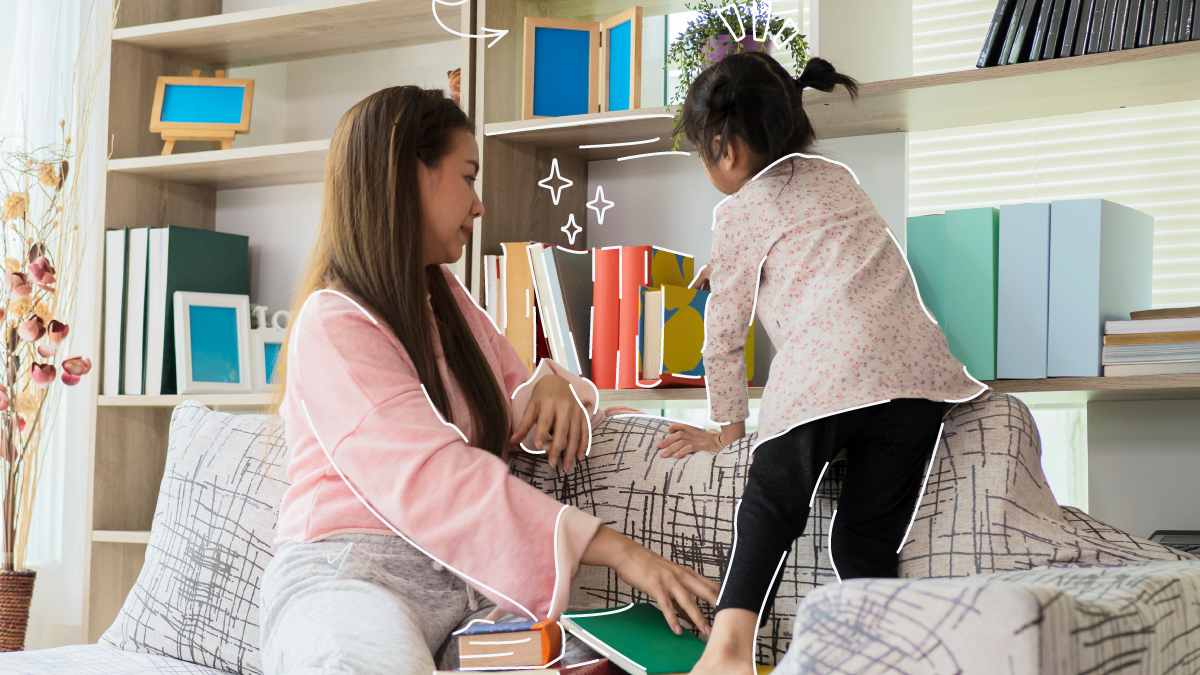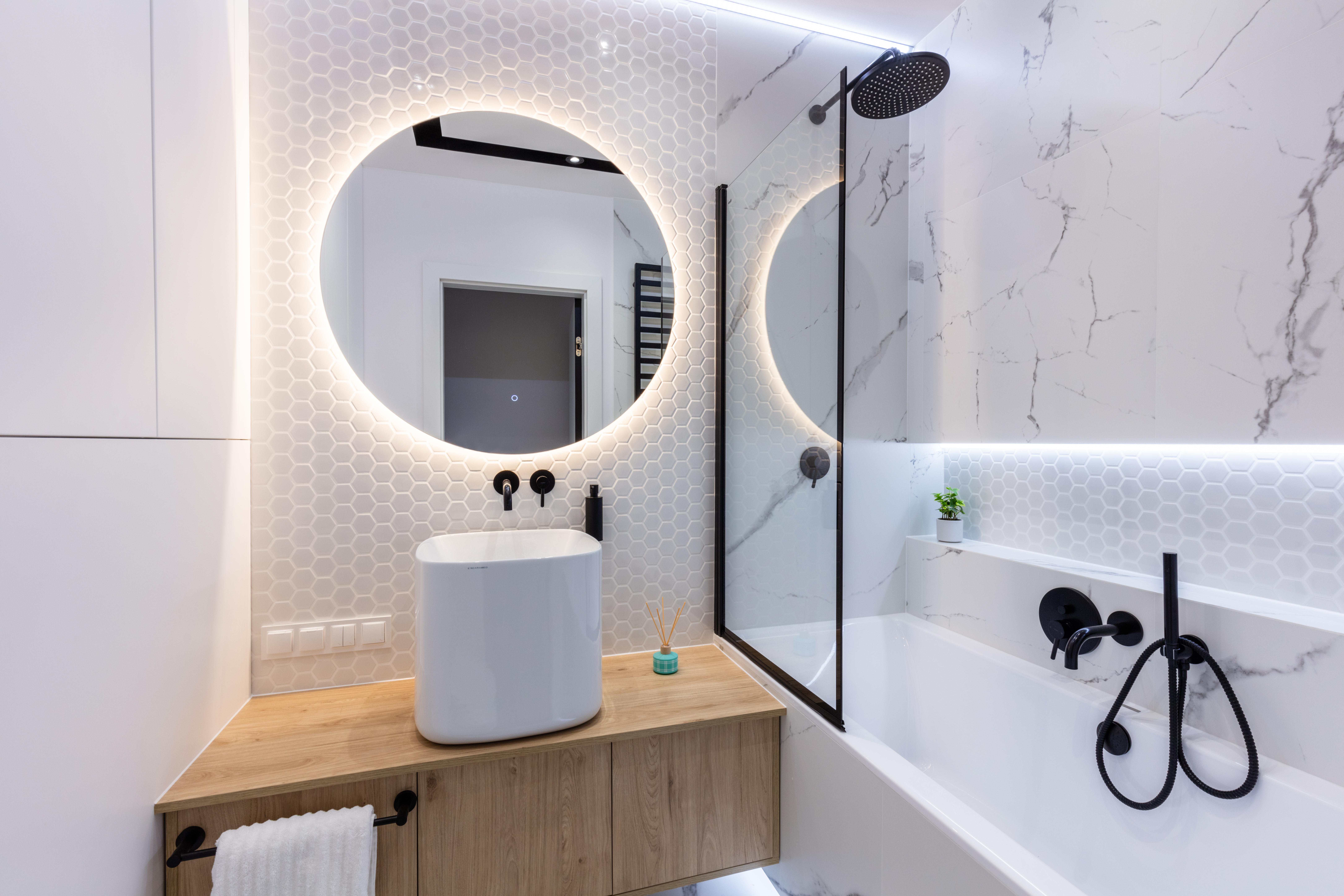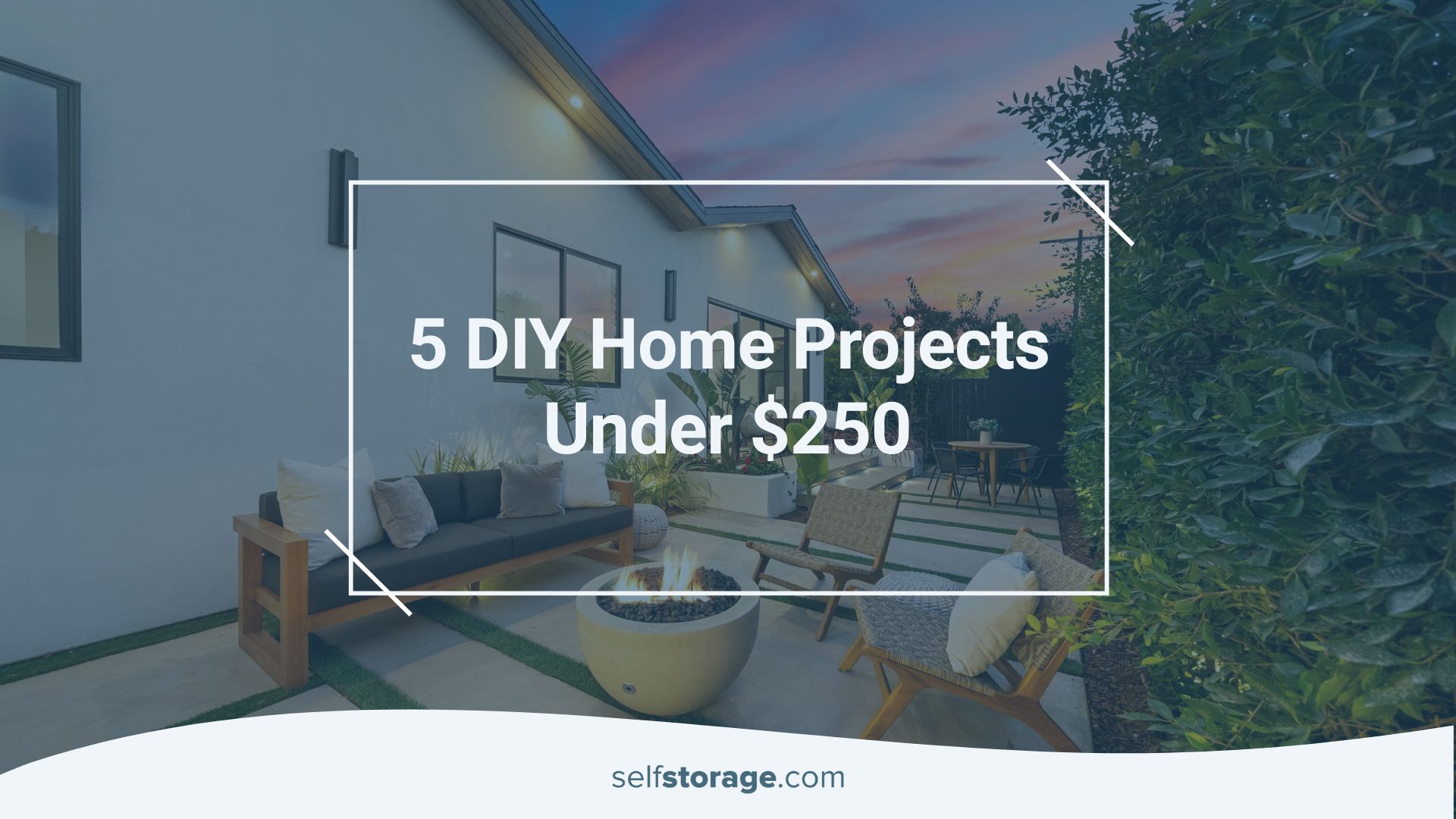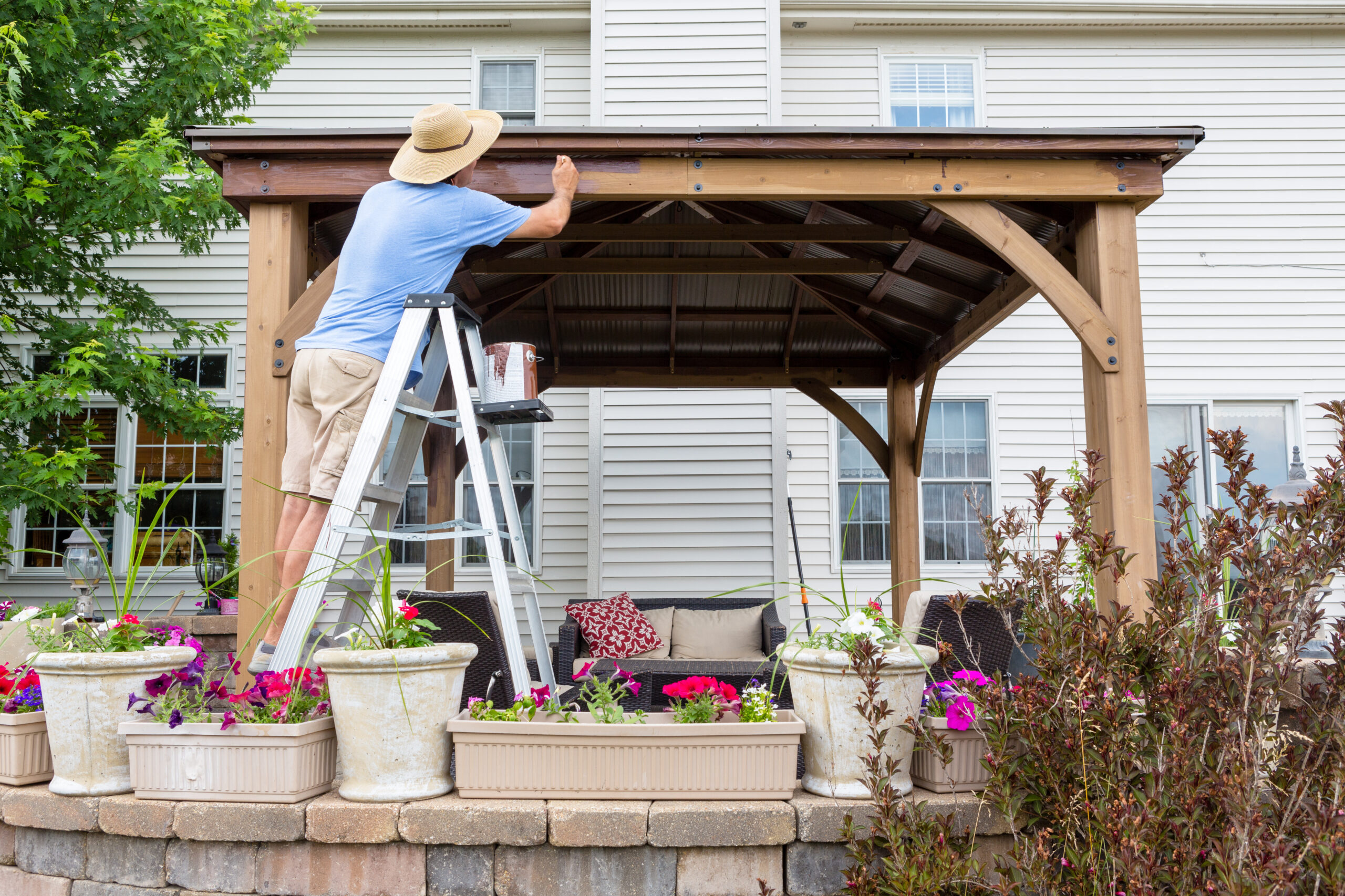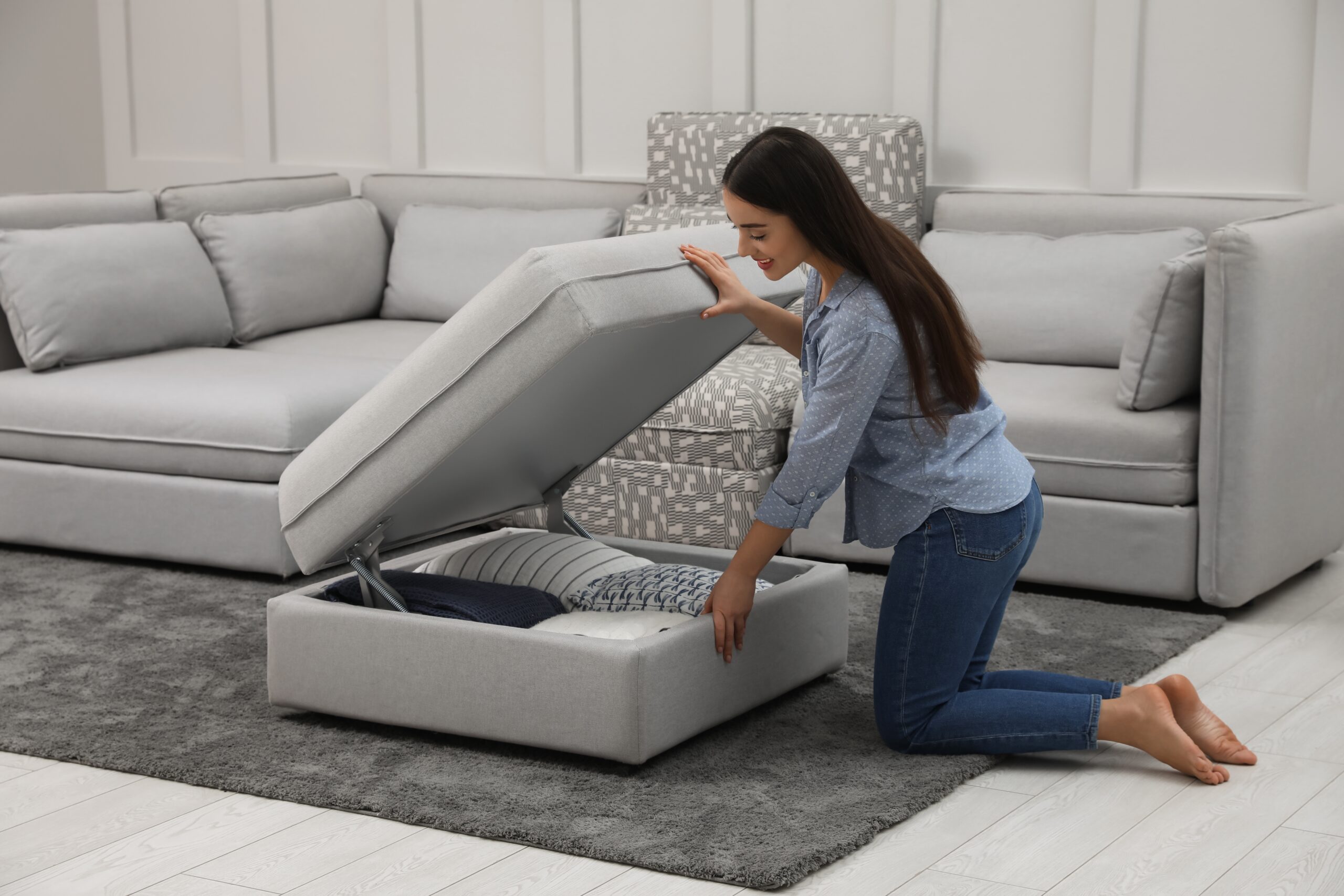Article takeaways
- Begin with strategic decluttering, using the one-year rule to identify items that truly deserve a place in your compact living room.
- Maximize vertical space with wall-mounted solutions and floor-to-ceiling storage that draws the eye upward.
- Choose multi-functional furniture that serves double duty as both seating and storage without overwhelming your space.
- Implement hidden storage hacks behind sofas, under stairs, and inside existing furniture to keep essentials accessible but out of sight.
- Rotate seasonal items to free up 30-50% more usable space by storing off-season decorations and textiles in a separate location.
Living in a small space doesn’t mean you have to give up comfort or style. With housing getting smaller and costs going up, a lot of people are dealing with cramped, cluttered spaces that feel more chaotic than cozy. The average American home has 300,000 items in it, and 54% of Americans feel totally overwhelmed by clutter. But here’s the thing: a few smart organization tricks can turn even the tiniest living room into a space that actually works and feels way bigger than it is.
Small living rooms do come with challenges, but they also give you chances to get creative in ways that bigger spaces don’t need. When every square foot counts, getting organized isn’t just about making things look nice. It’s about your mental health and daily life. Cluttered spaces actually increase your stress hormones, making simple things like having friends over or just relaxing after work feel impossible.+
We’re talking DIY storage projects that cost less than dinner out, furniture tricks that double your storage, and affordable ideas that don’t need major renovations or expensive custom work. And for those items you love but don’t use every day? Temporary storage can give you the breathing room to actually organize and enjoy your home.
1. Assess Your Space and Declutter First

Just like any decluttering project, a good, functional small living room organization plan starts with being honest about what you have, what you need, and what you use, and then getting rid of what you don’t need or don’t use. Too many people skip this step and go straight to buying more storage bins. But that doesn’t fix the real problem: you’ve got too much stuff for your space.
Start by looking at everything in your living room right now. Furniture, decorations, books, electronics, throws, pillows, and that pile of random stuff that always ends up on the coffee table.
The “one-year rule” is perfect for deciding what stays and what goes: if you haven’t used, enjoyed, or even noticed something in the past year, you probably don’t need it. This matters because Americans spend 12 days every year looking for lost stuff in cluttered spaces, and we collectively spend $2.7 billion every year replacing things we lost.
Make four piles: keep, donate, store somewhere else, and toss. The stuff you use regularly and actually enjoy gets to stay in your newly organized space. Things that have sentimental value but you don’t need daily (like seasonal decorations, extra electronics, or special occasion stuff) can go into storage. Books you’ve already read, old magazines, broken electronics, and duplicate items can be donated to local charities or thrown away.
When you actually apply the one-year rule, you might find that about 40% of your living room stuff hasn’t been touched in over eight months. This makes sense when you think about the 80/20 rule, which shows that people typically use only about 20% of their stuff 80% of the time. Getting rid of unused books, old magazines, broken electronics, and duplicate items creates space both physically and mentally by cutting down on visual clutter.
For stuff you love but don’t use daily (seasonal decorations, extra electronics, or pieces that don’t fit your current style), temporary storage is perfect. Instead of keeping rarely used items cluttering up your newly organized room, storing them elsewhere makes room for the organization systems that’ll actually improve your daily life. Knowing the difference between long-term and short-term storage helps prevent seasonal clutter from taking over your space again. Research shows that decluttering can cut your housework by 40% just by getting rid of stuff that needs cleaning and organizing.
2. Maximize Vertical Space
Once you’ve gotten rid of the clutter, think vertical. Small living rooms are usually between 130-200 square feet, which means most have tons of unused wall space you can turn into storage without using up floor space. The same vertical storage tricks that work in closets work great in living rooms, too. Vertical storage draws your eye up, making your ceiling look higher while giving you practical places to put everything from books to remotes.
DIY Floating Shelves Project (Under $50)
Making your own floating shelves costs way less than store-bought ones, and you get exactly the size and finish you want. If you’re not familiar with floating shelves, they’re basically shelves that appear to “float” on the wall with no visible brackets or supports underneath. The mounting hardware is hidden inside or behind the shelf, creating a clean, modern look that’s perfect for small spaces since they don’t add visual bulk.
You can see tons of floating shelf inspirations and examples at sites like Better Homes & Gardens, HGTV, or Pinterest to get ideas for different styles and finishes. The best part? What costs $50-100 per shelf at stores like West Elm or Pottery Barn, you can make for under $20 each with a quick trip to Home Depot or Lowe’s.
What you need:

How to do it:

These custom shelves hold books, decorative stuff, and small storage baskets while costing 60% to 70% less than store versions. Put shelves at different heights to make it look interesting while getting the most storage.
Wall-mounted shelving goes beyond just floating shelves. Floor-to-ceiling storage towers use your room’s full height, creating dramatic lines that make your ceiling look higher. Over-door organizers and hooks turn forgotten spots like the backs of closet doors into storage for shoes, cleaning supplies, whatever.
Think about mounting your TV on the wall to free up the floor space that’s currently taken up by an entertainment center. This one change often gives you enough room for more seating or storage furniture while making cleaner sight lines through your room. Wall-mounted TVs let you arrange furniture more flexibly since you’re not stuck positioning everything around a big entertainment center.
If you’re renting or don’t want to make permanent changes, removable wall storage works great too. Tension rod systems, removable hooks, and leaning ladder shelves give you vertical storage without damaging walls.
These small space living tricks work in other rooms too, and what you learn organizing your living room can easily help with bedroom storage problems and other areas of your home.
3. Multi-Functional Furniture Solutions
In small living rooms, every piece of furniture needs to work twice as hard. Multi-functional pieces get rid of the need for separate storage furniture while still giving you comfort and style. Find furniture that balances function with the right size for your room.
Storage ottomans are probably the most versatile multi-functional pieces you can buy. They work as extra seating when people come over, give you somewhere comfortable to put your feet up, and provide storage for blankets, games, or seasonal stuff. Regular coffee tables just give you surface space, but storage ottomans actually help clear clutter while adding function.
DIY Storage Ottoman Project (Under $30)
Turn a basic storage container into a good-looking, functional ottoman:
What you need:

How to make it:

This DIY ottoman costs less than $30 but works just like retail versions that cost $100 or more. Pick fabric that goes with your existing décor, or choose something durable and easy to clean for high-traffic areas.
Coffee tables with built-in storage work like command centers for living room organization. Look for designs with drawers, shelves, or lift-top compartments that hide remotes, coasters, magazines, and other daily stuff. Nesting tables give you flexible surface space that expands for entertaining or shrinks for daily living. Sofa tables that double as desks are perfect for studio apartments or small homes.
When you’re picking multi-functional furniture, measure carefully and think about traffic flow. Oversized pieces, even ones with great storage, can make small rooms feel cramped and hard to navigate. Find furniture that balances function with the right size for your room.
If your storage needs change, think about keeping extra furniture pieces in temporary storage and rotating them seasonally. A lightweight desk chair might replace a bulky armchair during tax season, while extra seating can come back when you’re planning to have people over. This lets you optimize your space for what you need now without being stuck with one furniture setup forever.
4. Hidden Storage Hacks
The best small living room organization often happens in places you don’t expect. Hidden storage keeps daily stuff accessible while keeping surfaces clean and uncluttered, which makes your space feel bigger and more organized.
Behind-sofa storage is one of the most underused spaces in living rooms. A narrow console table behind your sofa gives you surface space for lamps and decorative items while offering hidden storage in drawers or on lower shelves. This works especially well in open layouts where your sofa doesn’t sit against a wall.
Under-stair storage turns wasted space into valuable organization. Even in living rooms without stairs, the same idea works for other overlooked areas like space under side tables, behind doors, or in unused corners. Custom-sized storage containers or built-in solutions can turn these forgotten spaces into homes for board games, seasonal decorations, whatever you need to store.
Storage inside existing furniture multiplies your capacity without adding visual clutter. Adding bins or drawer organizers to existing cabinets makes them work better. Hollow ottomans or benches give you hidden storage that guests never suspect. Even regular bookcases get more functional when you add attractive storage baskets that hide smaller items while keeping clean lines.
Decorative baskets and containers work as both storage and design elements. Woven baskets add texture and warmth while hiding everything from throw blankets to kids’ toys. Pick containers that go with your décor style instead of looking like obvious storage.
For stuff you love but don’t need year-round (holiday decorations, seasonal linens), self-storage creates space for the everyday storage that makes daily life easier. Storing these items elsewhere prevents seasonal clutter from taking over your newly organized space while keeping them accessible when you need them.
5. Budget-Friendly DIY Projects
DIY projects that don’t cost much require minimal tools and skills while making a huge difference in small living room organization. For more ideas, check out these DIY home projects under $100 that can transform any small space.
PVC Pipe Shoe Storage (Under $20)
For living rooms that also work as entryways, visible shoe storage creates clutter fast. This solution keeps shoes organized and out of sight:
What you need:

How to make it:

Each pipe holds one pair of shoes while keeping them organized and dust-free. The vertical setup uses hardly any floor space while fitting multiple pairs.
Repurposed crate shelving gives you rustic charm while providing cheap storage. Wooden crates from craft stores or flea markets can be stacked, mounted on walls, or arranged as room dividers. Sand and stain them to match existing furniture, or leave them natural for a casual look.
Mason jar wall organizers work great for small items that tend to create clutter. Mount jars under shelves or inside cabinets to hold pens, charging cables, small decorative items, whatever. The clear glass keeps contents visible while staying organized.
Pegboard organization systems give you ultimate flexibility for changing needs. A small pegboard section behind a desk area or inside a cabinet can hold tools, supplies, or decorative items using hooks and small containers. When your needs change, just rearrange the components instead of buying new storage.
Fabric storage cubes made from cardboard boxes cost almost nothing compared to store-bought versions. Cover sturdy boxes with contact paper or fabric, add handles made from rope or ribbon, and create custom storage that fits your space and style perfectly. These work especially well for seasonal storage or organizing kids’ stuff.
When you’re working on DIY storage projects, keep craft supplies and tools organized so you don’t clutter up your newly organized space. Store project materials elsewhere until you need them to maintain the clean, organized environment you worked to create.
6. Strategic Furniture Placement
How you arrange furniture can be just as important as what furniture you pick. Smart placement creates better flow, makes your space feel bigger, and maximizes both function and storage opportunities.
Floating furniture away from walls might seem wrong in small spaces, but it actually creates better flow and makes rooms feel more spacious. Instead of pushing everything against the edges, try positioning your sofa a few inches from the wall. This creates space for a narrow console table behind it while making the seating area feel more intimate.
Creating zones in open spaces helps define different activities without needing physical barriers. A well-placed bookshelf can separate a living area from a dining space while providing storage for both zones. Area rugs, lighting, and furniture groupings can create distinct spaces within your living room without making it feel chopped up.
Using mirrors strategically amplifies natural and artificial light while creating the illusion of more space. Position mirrors to reflect windows or interesting features instead of just hanging them randomly. A large mirror opposite a window can effectively double your natural light while making the room feel significantly bigger.
Light-colored furniture contributes to visual spaciousness by reflecting light instead of absorbing it. This doesn’t mean everything needs to be white, but choosing lighter tones for bigger pieces helps maintain an open, airy feeling. Save darker colors for smaller accent pieces that add depth without overwhelming the space.
Think about sight lines through your room when arranging furniture. Clear paths for movement and unobstructed views to windows or focal points make spaces feel larger and more comfortable. Don’t block natural light sources or create furniture arrangements that require awkward navigation.
If you’re still experimenting with the best layout, temporarily storing larger furniture pieces gives you the flexibility to try different arrangements without committing to permanent changes. This approach lets you discover what works best for your specific space and lifestyle before settling on a final setup.
7. Seasonal Organization Strategies

Rotating seasonal items is one of the most effective ways to keep small living rooms organized while keeping your décor fresh and relevant. This strategy can free up 30% to 50% of your storage space by making sure only current-season items take up prime real estate in your home.
Rotating seasonal decorations and textiles prevents overcrowding while letting you enjoy different looks throughout the year. Store summer’s lightweight throws and bright pillows during the winter months, replacing them with cozy blankets and warmer tones. This approach keeps your space feeling current and intentional instead of cluttered with items from every season.
Winter versus summer furniture arrangements might mean swapping lightweight outdoor cushions for heavy winter throws, or repositioning furniture to take advantage of seasonal light changes. During darker winter months, arrange seating to maximize natural light. Summer arrangements might prioritize airflow and cooling.
Holiday decoration storage needs special consideration since these items are only used briefly each year but often hold significant sentimental value. Instead of letting holiday decorations take up valuable storage space year-round, designate specific containers and storage locations that keep them safe but out of your daily living space.
Set up a seasonal rotation schedule with calendar reminders to make sure you swap things out on time. Spring cleaning becomes a chance to assess what worked during the previous season and what needs adjustment. This regular evaluation prevents a stockpile of items that no longer serve your space or lifestyle.
For people with lots of seasonal items (extensive holiday decorations, seasonal sporting equipment, or bulky winter bedding), understanding long-term versus short-term storage options can help you choose the most cost-effective approach. Seasonal items are perfect candidates for external storage since you need them predictably but not frequently. Research shows this approach can free up 30% to 50% more space in small living rooms while keeping seasonal items accessible when needed.
8. When to Consider Self Storage
Sometimes the most effective organization comes from recognizing when items you love just don’t fit comfortably in your current space. Knowing which items work well for external storage and when the investment makes financial sense can dramatically improve your daily living experience.
Items perfect for storage include seasonal furniture, like patio sets or holiday decorating supplies, extra electronics you’re not currently using, books and media collections you want to keep but don’t use regularly, and artwork or decorative pieces that don’t fit your current décor but hold sentimental value. Although these things often represent significant financial or emotional investments, making disposal feel wasteful, they can eat up valuable space that could be better used for daily necessities.
Think about the cost comparison between storage solutions and larger living spaces. In many markets, the monthly cost of a small storage unit is less than one-tenth the additional rent needed for an extra room. For items you don’t need daily access to, a storage unit offers significant savings while letting you keep ownership of the things you value most.
Accessibility should also guide your storage decisions. Items needed seasonally (holiday decorations, winter sports equipment) work well for external storage since you can plan pickup and delivery around known schedules. But things you might need unexpectedly should stay easily accessible in your home.
Climate-controlled options protect valuable items from temperature changes and humidity that could cause damage over time. Important documents, family photos, electronics, and wooden furniture benefit from climate-controlled storage environments, especially in areas with extreme weather.
The decision to use external storage often gives you the breathing room necessary to properly organize remaining items. Without the pressure of finding space for everything you own, you can focus on creating efficient systems for daily necessities while knowing treasured but rarely used items stay safe and accessible.
Kickstart Your Home Organization Journey with a Nearby Storage Unit from SelfStorage.com
Turning a small living room from cramped and chaotic to organized and spacious doesn’t require expensive renovations or custom-built-ins. Smart thinking about what you actually need in your daily space, creative solutions that maximize every square inch, and wise decisions about what items deserve prime real estate in your home make all the difference.
Starting with thorough decluttering creates the foundation for everything else. Multi-functional furniture and vertical storage solutions maximize capacity without overwhelming your space, while hidden storage tricks keep everyday necessities organized but out of sight. Budget-friendly DIY projects give you custom solutions at a fraction of retail costs, and smart furniture placement makes your space feel larger and more functional.
Most importantly, remember that organization is an ongoing process, not a one-time thing. Seasonal rotation keeps your room fresh while preventing the accumulation of unnecessary items. Building systems that are easy to maintain makes sure your organized room stays that way over time.
Living with less isn’t the goal. Living more intentionally with the space you have is what matters. When every item in your living room has both a purpose and a designated place, even the smallest rooms can feel roomy, welcoming, and perfectly suited to your lifestyle.
Ready to live more intentionally in your living space? Find affordable storage units near you to safely store seasonal items, sentimental pieces, and rarely used belongings while you transform your daily living space.
